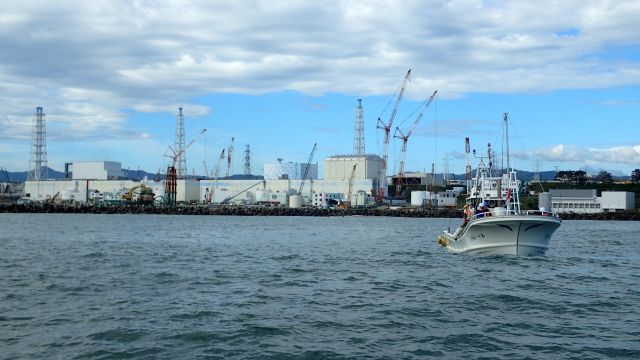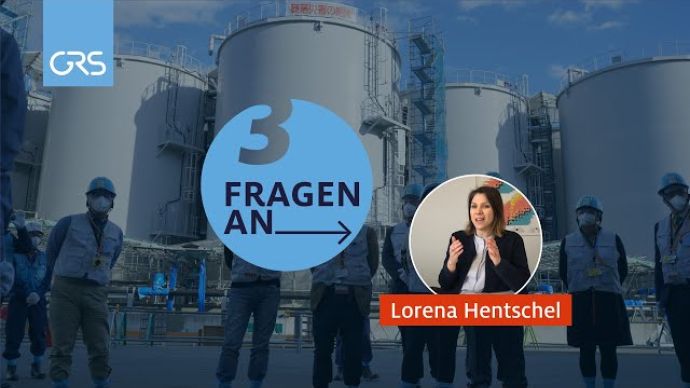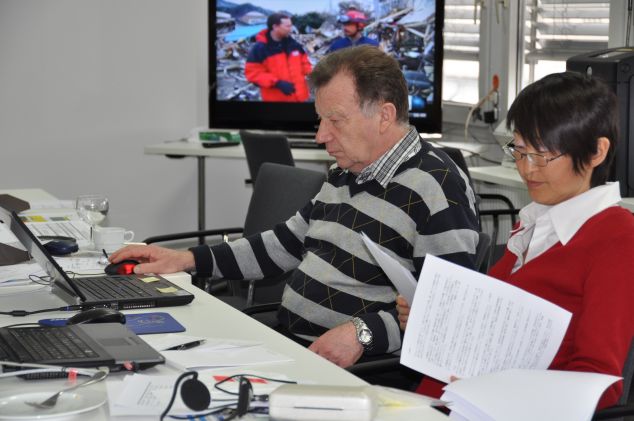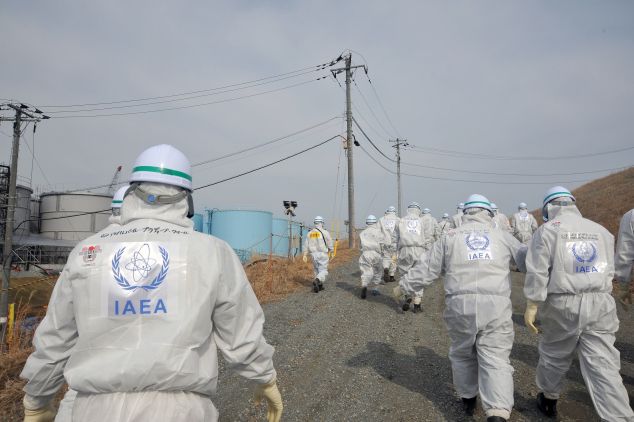
Fukushima nuclear accident
On 11 March 2011, the most severe earthquake since records began occurred off the east coast of Japan's main island of Honshū. The quake and the resulting tsunami devastated large areas of eastern Japan and claimed around 20,000 lives, according to official statistics.
At the Fukushima Daiichi nuclear power plant site, the quake and tsunami caused the almost complete loss of the electricity supply to four of the total of six reactor units. Significant amounts of radioactive material were released into the environment, especially in the first days of the accident. These releases led to contamination of the surrounding area. A large number of people were evacuated.
On the occasion of the 10th anniversary of the disaster, GRS published a series of articles and interviews about the situation on site:
>> 10 years of Fukushima Part 1: Accident Sequence – Milestones of a Disaster
>> 10 years of Fukushima Part 2 : Radiological Consequences
>> 10 years of Fukushima Part 3: Dismantling
>> 10 years of Fukushima Part 4: The Water
>> 10 years of Fukushima Part 5: Lessons Learned
>> When things get serious - Germany's INES officer interviewed on the nuclear accident at Fukushima
>> Searching for clues - Interview with the GRS radiation protection supervisor on the radiological consequences of Fukushima
>> Piecing together the accident sequence – Interview with the Containment Department Head of GRS
A detailed analysis of the sequence of events and the causes of the accident as well as of its radiological consequences is provided in the GRS report „Fukushima Daiichi 11 March 2011 – Accident sequence, radiological consequence (in german)“.

2011: Deployment of the GRS Emergency Centre
Only a few hours after the start of the accident, the GRS Emergency Centre started its work. As an expert organisation of the German Federal Government, GRS keeps a team of experts from different disciplines on standby at all times on behalf of the Federal Environment Ministry. In case of a severe nuclear incident or accident, the team collects and evaluates information on the event and prepares forecasts on possible developments.

From midday on 11 March until the beginning of July 2011, the Emergency Centre team prepared more than 200 situation reports on the situation at the Fukushima site for the Federal Environment Ministry. On behalf of the Ministry, GRS also made these situation reports available to the public - first on its website and later on its own Fukushima information portal.
Technical support for "stress tests" in 2011
On 17 March 2011, the Federal Environment Ministry in consultation with the Länder commissioned the Reactor Safety Commission (RSK) to conduct a plant-specific safety review ("stress test") for all German nuclear power plants. The aim of the review was to examine – against the background of the events at Fukushima - how robust the design of the nuclear power plants and the planned emergency measures are against increased hazards that were not postulated in the design. To support the RSK, GRS, together with other technical and expert organisations, organised the required tests and performed them on the basis of a catalogue of requirements of the RSK. The RSK evaluated the results of these tests in a final report.
In addition to the national stress tests, European stress tests also took place, organised by the European Nuclear Safety Regulators Group (ENSREG). All EU member states had to present the safety of their nuclear power plants in the form of country reports. GRS supported the Federal Ministry for the Environment in preparing the report for Germany. Based on the results, the "ENSREG Action Plan" and a system of peer reviews were developed to monitor the implementation of the results in the individual countries.
Information Notice by GRS
On behalf of the Federal Environment Ministry, GRS prepared an Information Notice on the effects of the earthquakes at the Japanese nuclear power plant sites Fukushima Daiichi and Daini as well as Kashiwazaki-Kariwa at the beginning of 2012. Information Notices are prepared by GRS when an event of safety significance occurs in a nuclear installation in Germany or abroad and the experience gained is of interest for the safe operation of German installations.
The Information Notice on the Fukushima accident contains a total of 22 recommendations for German plants, i.a. on the supply of electricity and cooling water, seismic design, and aspects of emergency preparedness.
The recommendations of GRS and the RSK recommendations on improving the robustness of the German nuclear power plants formed the basis for the National Action Plan of the Federal Ministry for the Environment.
National research projects of GRS on Fukushima
Since 2011, GRS has been investigating a variety of issues related to the accident at Fukushima in several research projects. At national level, these projects are funded by the Federal Ministry for the Environment and the Federal Ministry of Economics.
In successive research projects, GRS has reconstructed the accident sequences in the Fukushima nuclear power plant in as much detail as possible on the basis of all available information. Thermal-hydraulic analyses using the GRS code system ATHLET-CD/COCOSYS, which concentrated on the processes in Units 2 and 3, provided additional information, e.g. regarding the core destruction and the conditions inside the containment during the first days of the accident.
In-depth investigations were also carried out on topics such as natural external hazards, electrical power supply, or organisational measures. In several research projects, the simulation codes of GRS (e.g. ATHLET-CD/COCOSYS) were validated and further developed with regard to different aspects of the accident situation.
International research: participation in OECD/NEA projects
Funded by the Federal Ministry for the Environment, Nature Conservation and Nuclear Safety and the Federal Ministry of Economics, GRS participated in the project "Benchmark Study of the Accident at the Fukushima Daiichi Nuclear Power Station" (BSAF) initiated by the Nuclear Energy Agency of the OECD (OECD/NEA) in 2012. The objective of the analyses by the partners from ten countries was to obtain detailed findings on the accident sequence at Fukushima, which can be used to support the Japanese organisations involved in preparing the decommissioning of the plants.
Building on the BSAF project, a new project was launched in 2019, co-ordinated by the OECD/NEA. The focus of the investigations in the research project "Analysis of Information from Reactor Buildings and Containment Vessels of Fukushima Daiichi NPS" (ARC-F) is on the behaviour of radioactive fission products during the accident sequences. Among other things, GRS calculates the accident sequences in the identical Units 2 and 3 with the simulation code AC² (ATHLET-CD /COCOSYS) developed by GRS.
Collaboration on IAEA report

In addition to its own research activities, GRS participated in the preparation of the report "The Fukushima Daiichi Accident" of the International Atomic Energy Agency (IAEA) on behalf of the Federal Ministry for the Environment.
Consisting of the "IAEA Director General's Report" and five technical volumes, the report published in August 2015 offers one of the most comprehensive summaries of the findings on the causes, course and consequences of the accident.